by Ray Linville
Imagine fishing in a fast-flowing, rocky mountain stream and reeling in trout for dinner. Such experiences have always been part of the food culture in the Blue Ridge region, whether for the Cherokee with prehistoric ties to its hills and streams or the families who settled there after the Trail of Tears campaign evicted most Cherokee from their tribal territory.
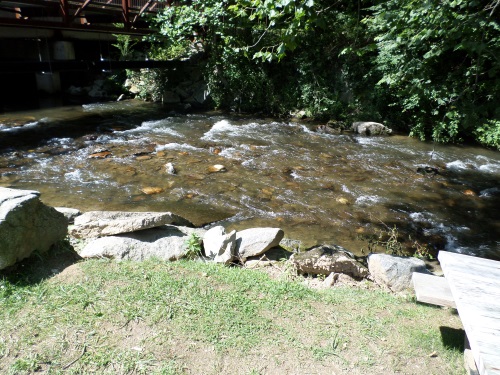
Visitors today can easily envision the days of how trout streams provided food for families as well as the thrill of mountain fishing. To encourage trout fishing as a heritage tourism activity, the N.C. General Assembly established the Mountain Heritage Trout Waters Program in 2007. Several locations in Haywood County and neighboring counties offer access to streams designated by the program. Only a special $5 fishing license (good for three days) is required. Some locations, such as the Town of Maggie Valley, even provide rods and reels at no charge. (Stocked ponds, although they don’t provide the stream experience, also offer chances, particularly to children, to reel in trout.)

of being in a mountain stream, but young anglers can easily catch a prize
fish. (Splash was made by trout when fed food pellets.)
Mountain trout has always been among the best of the state’s homegrown agriculture, or aquaculture to be more specific. With many restaurants accepting the challenge to feature N.C. products as part of the “Got to Be N.C.” campaign, the availability of mountain trout has expanded.
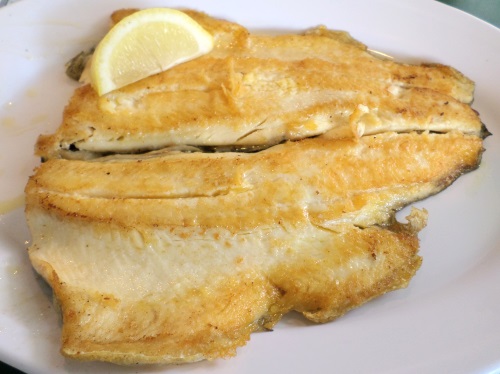
fillet, that I enjoyed this summer.
The restaurant where I recently dined identified Sunburst Trout Farms in Haywood County as its trout source, and I made plans to visit. Sunburst, the first commercial trout farm in the South, is proud of its heritage and even invites visitors and school groups to observe its facility, where it processes trout fillets, smoked trout, trout caviar, and other products such as trout dip.
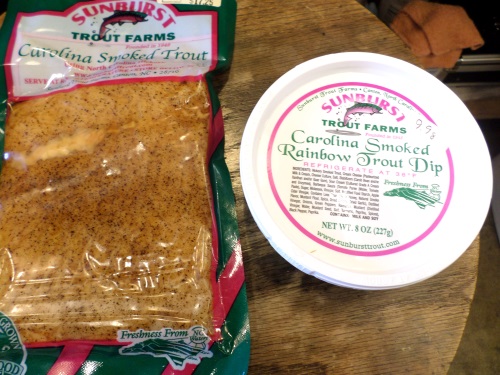
at the Western N.C. Farmers Market in Asheville illustrates.
Sunburst is in Canton near Cold Mountain (famous in the novel by Charles Frazier and the subsequent 2003 motion picture). After leaving the interstate, I drove for about half an hour through the shadows of tall mountain trees on curvy roadways next to picturesque and rocky Pigeon River before I saw a sign for Sunburst. As I slowly drove in, I could see the trout raceways (rectangular tanks supplied with flowing water) and hear the graceful roll of water spilling over a dam.
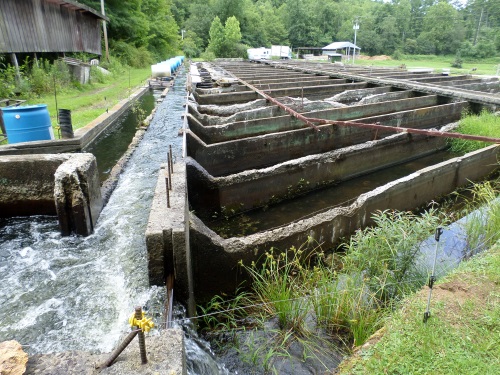
5,000 gallons a minute. The electric wire in the foreground keeps
bears from pilfering the trout.
During my visit, Chris Inman (yes, a relative of the Inman family in Cold Mountain), who has worked at Sunburst for 22 years, explained the operations. Sunburst itself does not hatch the eggs but instead relies on other farms for its supply of young trout. At one the eggs are hatched, and the trout grow to about four ounces. Then at another farm they grow to at least a pound and half, when they are taken to Sunburst.
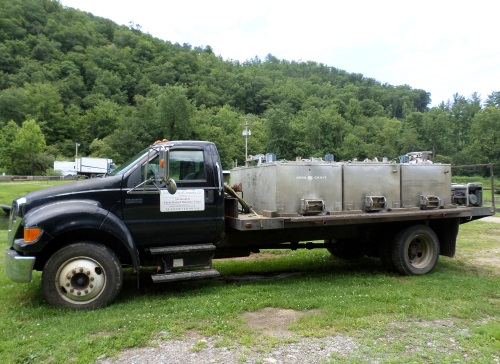
Trout are kept in the raceways at Sunburst where they mature for up to another nine months. Cold water from adjacent Lake Logan (where the Cherokee village Ka-nu-ga long existed well before Pigeon River was dammed) flows rapidly through the raceways and almost replicates the currents and conditions of mountain streams.
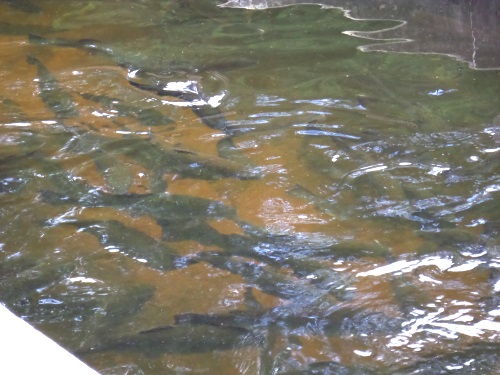
The visit was so educational and the production facility so clean that I had to take home several pounds of freshly filleted trout. In fact, nothing from Sunburst is frozen. Local and regional restaurants are supplied by a cadre of drivers and out-of-state customers by overnight shippers.
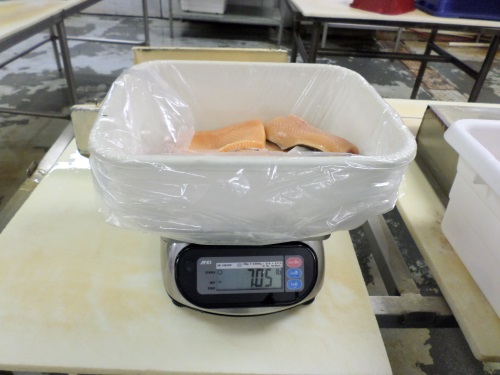
Sunburst processes about 8,000 pounds of fish a week. Although trout fishing has long been indispensable for feeding many families in the Blue Ridge, today it is even more important for the economy. The N.C. Wildlife Resources Commission estimates that trout fishing generates $146 million to the local economies of North Carolina.
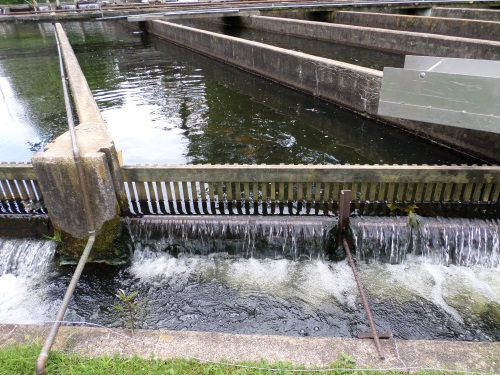
Aquacultural producers such as Sunburst, which started in 1948, have made enjoying mountain trout so simple for many years. Although true anglers yearn to be in cold mountain streams, all of us can enjoy the ready availability of mountain trout and appreciate its heritage in our state’s foodways because North Carolina is the second largest producer of trout in the United States.
_________________________________________________
Mountain Trout with Almonds
Preparing mountain trout is simple, particularly when fresh fillets are provided by N.C. aquacultural producers.
Ingredients
1-1½ pound mountain trout fillet, cut into approximately four-ounce portions
1 tablespoon butter
1 tablespoon vegetable oil
1/8 teaspoon dill weed
1 tablespoon slivered almonds
Salt and pepper to taste
Directions
1. Place trout in frying pan with butter and oil. Sprinkle with dill. Season with salt and pepper.
2. Sauté trout over medium heat in bubbling butter and oil for approximately 10 minutes or until trout is flaky and almost white. (If fillets are thick, be careful not to overcook.)
3. Add almonds to pan as trout is cooking; stir almonds frequently; remove if they start to brown before fish is cooked. Serve almonds over sautéed trout.
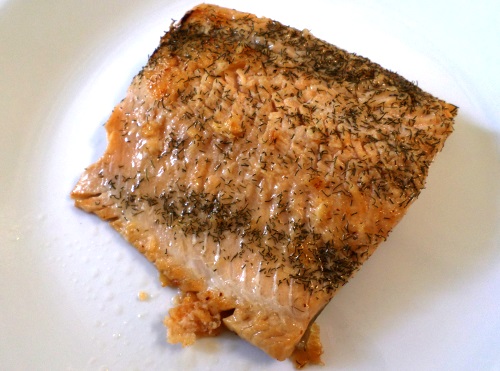
_______________________________________________________________
 Ray Linville writes and lectures on regional culture, including foodways and folklife. He has taught in the N.C. Community College System as a professor of English and humanities and served on the board of the N.C. Folklore Society. Read more about Ray’s ramblings at his blog: Sights, Sounds and Tastes of the American South.
Ray Linville writes and lectures on regional culture, including foodways and folklife. He has taught in the N.C. Community College System as a professor of English and humanities and served on the board of the N.C. Folklore Society. Read more about Ray’s ramblings at his blog: Sights, Sounds and Tastes of the American South.
___________________________________________
RESOURCES
Cherokee Removal and Trail of Tears
Freshness from North Carolina Waters
Mountain Heritage Center (Western Carolina University)
Mountain Heritage Trout Waters
N.C. Wildlife Resources Commission
Trout Fishing in North Carolina
Trout Fishing Ponds in North Carolina
Editor’s Note: For a recent post on another topic related to the “Got to Be NC” program, see “Foods Made in N.C. Often Continue Family Traditions.”
Leave a Reply